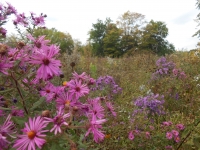Little Bluestem, Schizachyrium scoparium, Switchgrass, Panicum virgatum, and Bottlebrush Grass, Elymus hystrix, are grasses that not only tolerate dry soil conditions but have some of the most beautiful leaf color and seed head displays this time of year. With its bottlebrush-like seed heads ripening to a golden brown color in September, Bottlebrush grass is a fantastic species found in dry shady areas.Little bluestem changes leaf and stem color from a bluish-green hue to a russet red. A sun-lover, Switchgrass foliage transforms from green to an eye-stopping golden color in early Autumn.
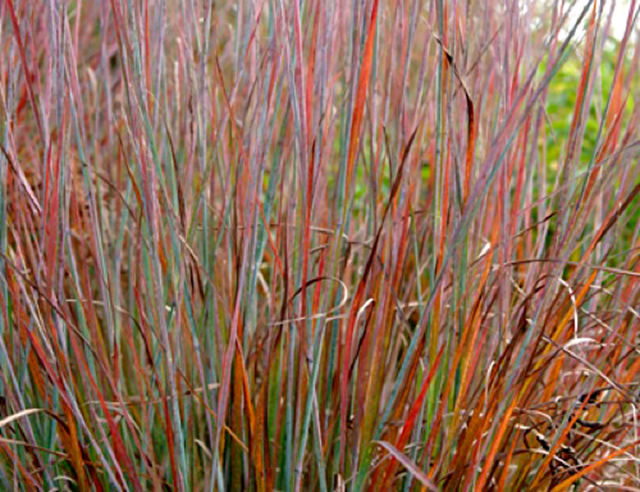
Little Bluestem, Schizachyrium scoparium. Photo: Klhem's Songsparrow Nursery
Also found within the sunny patches of the park’s is the Purple Prairie Clover, Dalea purpurea. This short statured prairie plant is still showing off its summer flower color, despite the dryness. The multitude of Aster species’, Symphyotrichum sp., flower colors --pink, purple, white, and blue-- dance throughout our prairies, savannas, and woodland plant communities.
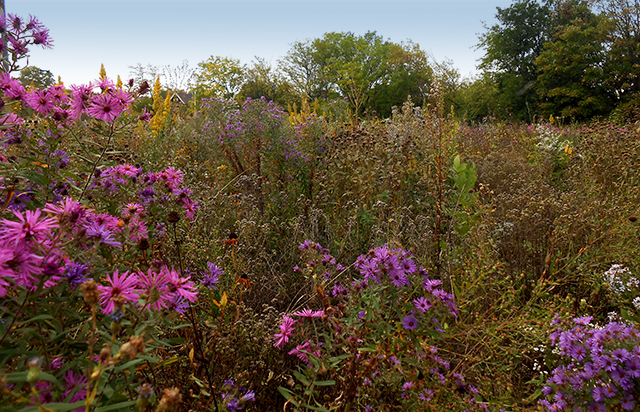
Aster, Symphyotrichum sp. Photo: Michaela Molter
ZigZag Goldenrod, Solidago flexicaulis, found in our woodland and forest areas only shines brighter with its brilliant yellow flower color during dry weather.
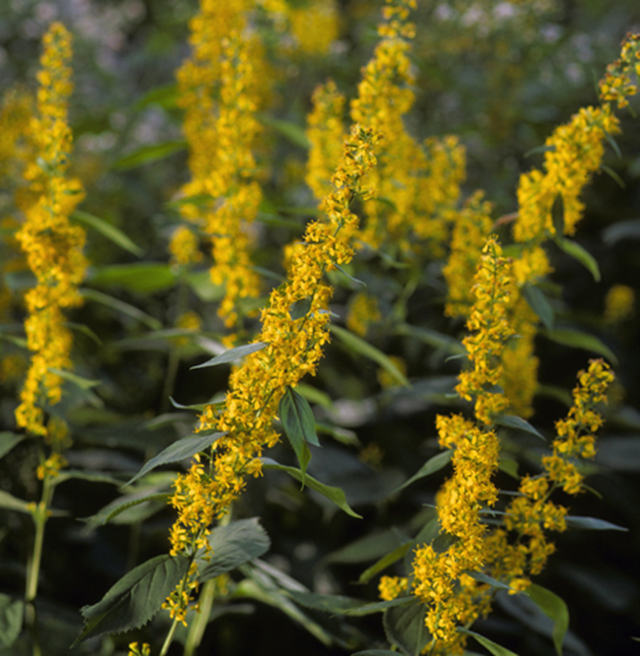
ZigZag Goldenrod, Solidago flexicaulis. Photo: Lady Bird Johnson Wildflower Center
Let’s not forget the vibrant splash of reds, yellows, and oranges that our native Smooth and Staghorn Sumac, Rhus glabra and Rhus typhina, provide!
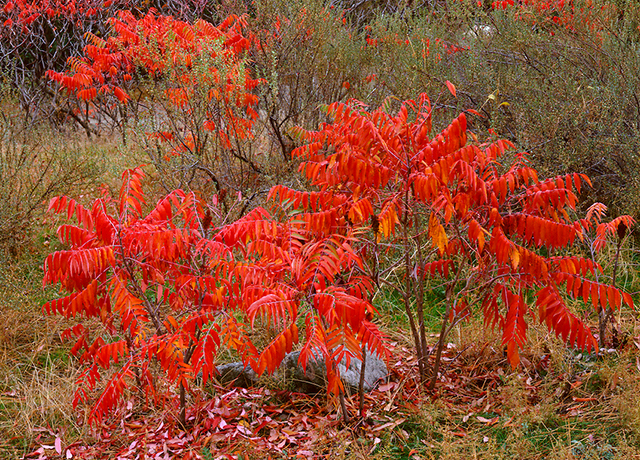
Smooth Sumac, Rhus glabra. Photo: John Barger
Common Snowberry, Symphoricarpos albus, grows in dry areas of full sun to full shade and produces clusters of white, blueberry-sized fruit that provide a unique textural contrast of the changing seasons. And the mighty White Oak, Quercus alba. While its Autumn leaf colors vary, it shows a tolerance beyond question for our presently dry soil conditions and provides some great shade to enjoy what days remain for our 2017 growing season. Come join us in the parks and marvel at what changes in the season brings of our Wisconsin native plants.
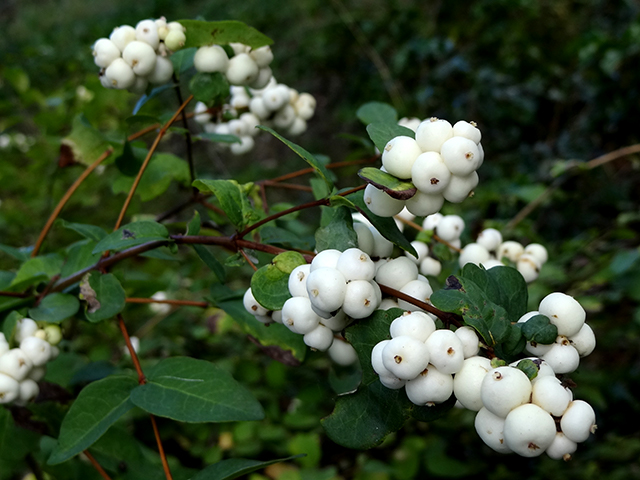
Common Snowberry, Symphoricarpos albus. Photo: Careann's Musings


